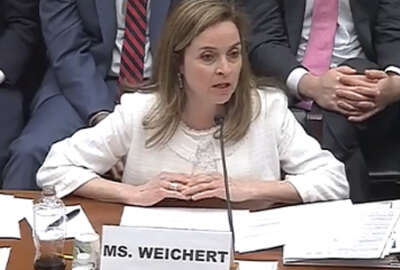
Can the federal workforce be reorganized out of a job?
Heather White, federal employment lawyer and partner at the Federal Practice Group, thinks the proposed merger of the departments of Labor and Education may be a...
Best listening experience is on Chrome, Firefox or Safari. Subscribe to Federal Drive’s daily audio interviews on Apple Podcasts or PodcastOne.
Heather White doesn’t think the proposed merger of the Labor and Education departments is logical, or even on the level. Instead, the federal employment lawyer and partner at the Federal Practice Group thinks it may be a pretext to eliminate some of the functions of those agencies, water down their missions and possibly even downsize their workforces.
“A reorganization can be an excellent way to carry out a shell game and eliminate functions while no one is looking,” White told Federal Drive with Tom Temin.
White doesn’t see much overlap in the missions of the two departments, and said she doesn’t buy Office of Management and Budget Director Mick Mulvaney’s explanation that it’s all about building up the American workforce. If that were the case, she said, why not include the Treasury, Commerce and Agriculture departments as well?
“Frankly, I think there has to be a concern that by shoehorning all of these more progressive, maybe more liberal, maybe more social safety net subjects into one agency, there’s a thought that, yes, this administration is hostile to a federal role in terms of labor enforcement as well as educational enforcement,” White said. “So the goal may be to water it down or even eliminate things while people are distracted by other issues.”
There’s always a danger — or maybe it’s part of the attraction — of reducing the headcount during a reorganization, she mused. Agencies look to the Office of Personnel Management to discern what to do when jobs become redundant in the federal workforce. OPM released its latest workforce reshaping manual in March 2017, which is a refresher and consolidation of reduction-in-force (RIF) policies applicable to title V employees.
But White said if a program or office was created by statute, another statute would be required to eliminate them.
“As long [as] the statute is on the books, and as long as they’re appropriating funds for it, there does have to be program staff to administer the program,” she said.
And the Congressional Research Service agreed with her. In a June 27 legal sidebar, the legislative agency weighed in on the reorganization proposal.
“Some, though not necessarily all, of the Trump Administration’s reorganization proposals appear likely to require authorizing legislation from Congress,” the brief said. “For instance, proposals to transfer an entity or function vested by Congress in a particular agency to another agency, or to combine statutorily created entities into a new department, likely require new legislation authorizing the action. Likewise, a proposal to privatize an agency and eliminate it from the federal government would require congressional authorization.”
It said agencies created by Congress are limited to the actions the law authorizes, including restrictions placed on the structure and scope of their authority. So anything an agency attempts to do has to be justified by law, including reorganization.
But said law usually does not specify an office or organization required to carry out a particular function. Hence, the executive branch does have some latitude to reorganize through delegation, as long as said function is completed. So the leeway here for the executive branch is primarily structural.
Ultimately, though, it said Congress decides how to organize agencies and departments within the executive branch.
However, White did say some positions could be at risk if this reorganization goes through, primarily on the management side. Redundancies in administration, human resources, procurement and similar functions could be resolved through staff reductions.
Copyright © 2024 Federal News Network. All rights reserved. This website is not intended for users located within the European Economic Area.
Daisy Thornton is Federal News Network’s digital managing editor. In addition to her editing responsibilities, she covers federal management, workforce and technology issues. She is also the commentary editor; email her your letters to the editor and pitches for contributed bylines.
Follow @dthorntonWFED





